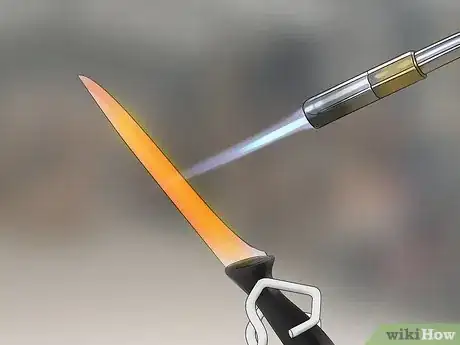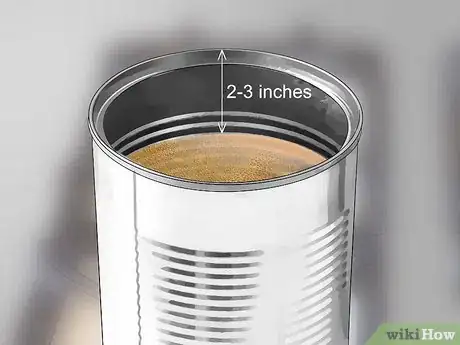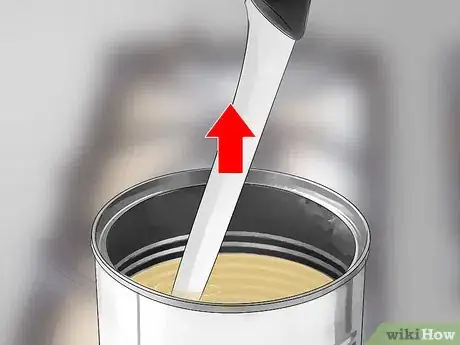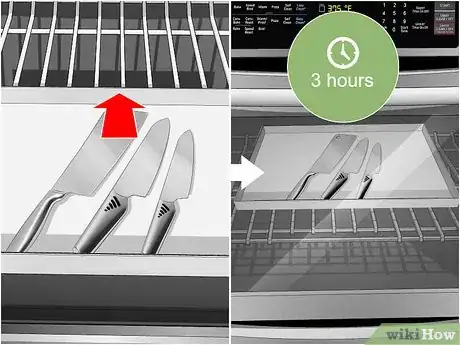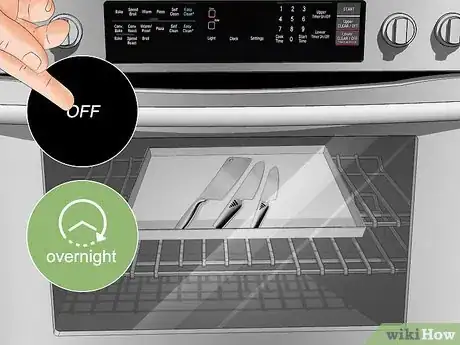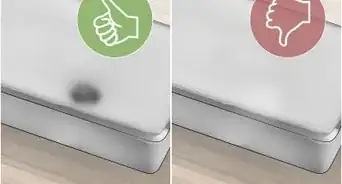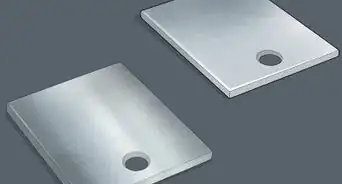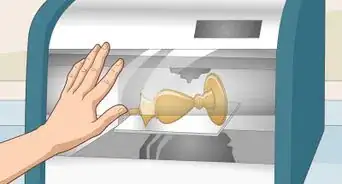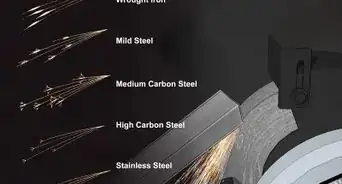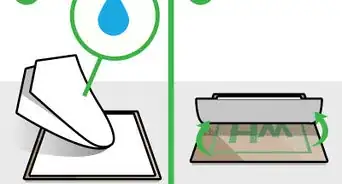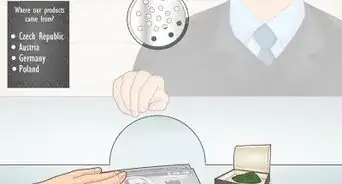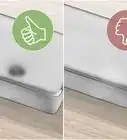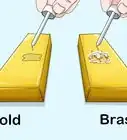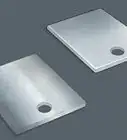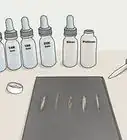This article was co-authored by wikiHow staff writer, Hunter Rising. Hunter Rising is a wikiHow Staff Writer based in Los Angeles. He has more than three years of experience writing for and working with wikiHow. Hunter holds a BFA in Entertainment Design from the University of Wisconsin - Stout and a Minor in English Writing.
There are 10 references cited in this article, which can be found at the bottom of the page.
wikiHow marks an article as reader-approved once it receives enough positive feedback. This article received 28 testimonials and 92% of readers who voted found it helpful, earning it our reader-approved status.
This article has been viewed 921,314 times.
Learn more...
Steel is a common durable alloy, and while most steel used in tools is already tough, you can harden it even more to prevent wear and tear. Hardened steel prevents knife blades from dulling and tools from bending and breaking. With a simple heating and quenching process, you can make your steel last for much longer!
Steps
Heating the Steel
-
1Light a propane blow torch to use as a heat source. Open the gas valve near the base of the torch. Hold a striker over the end of the torch and squeeze it to create a spark. The torch should ignite after a few tries. Turn the gas valve to adjust the flame to a small cone shape.[1]
- Larger flames produce less heat while smaller flames produce a higher heat.
- Blow torches only heat a small concentrated area. For larger pieces of steel, you need to use a forge in order to heat the whole thing.
Safety Precautions
Always wear goggles and gloves when operating a propane blow torch.
Before operating your torch, read all instructions so you know how to handle it safely.
-
2Hold the steel directly in the flame. Hold the steel with your non-dominant hand using a pair of metal tongs so you aren’t near the flame. If you can’t hold the steel with tongs, set it on a larger fireproof work surface. Use the torch with your dominant hand to heat the entire steel piece before focusing the flame on the area you want hardened, such as the end of a screwdriver or chisel.[2]
- Wear thick gloves so you don’t burn yourself.
- Work on a metal or steel surface, such as an anvil, to avoid any fire hazards.
Advertisement -
3Wait until the steel turns cherry-red in color. Watch for the color of the steel to change as it gets hotter. When the steel is a bright cherry-red, about 1,400 °F (760 °C), then it’s been heated enough to strengthen the steel.[3]
- The actual temperature of the steel depends on the carbon content inside. Higher carbon contents will take longer to heat.
- Another good test for determining when the steel is ready is seeing if a magnet sticks to its surface. If the magnet doesn’t stick, it’s ready to be pulled away from the heat.[4]
Quenching the Metal
-
1Fill a heat-safe container with water or oil deep enough to submerge your steel. Use a coffee can or similarly shaped container as your quenching chamber. Pour in water or vegetable oil so it’s 2–3 inches (5.1–7.6 cm) from the rim of the container. Make sure the oil or water is at room temperature.
- This step should be done before heating the steel, as the steel should be quenched immediately after removing from heat.[5]
- Water is great for rapidly quenching the hot metal, but it could cause thin steel to distort or crack.
- Vegetable oil has a higher boiling point, so the hot steel will take longer to cool and reduce the chance of it cracking. However, oil may spill and create a fire hazard if the steel is put into the oil too quickly.
-
2Transfer the heated steel directly to your quenching medium. Use your tongs to carry the steel while it’s still hot to your container. Stand back as you completely submerge the steel in the water or oil since it will create steam or splash out. Keep holding onto the steel so you don’t have to fish it out later.[6]
- Quenching the steel rapidly cools it so the alloys inside harden together.
- Wear thick gloves and a face mask before you quench your steel so the water or oil doesn’t splash onto your hands.
- Keep a grade B fire extinguisher nearby in case of a fire.
-
3Remove the steel from the quenching medium when it stops bubbling. The water or oil will continue to boil as the heat transfers from the steel. Keep the steel completely submerged until there is no more steam or bubbles, which should only take a few minutes. Set the steel back on your work surface when you’re finished.[7]
Quenched steel is harder, but it becomes more brittle. Don’t drop or try to bend the steel once it’s removed.
-
4Wipe any residual quenching medium off the steel. Water is corrosive to steel and could cause damage if it’s left on the surface. Wear gloves while you use a shop cloth to dry the steel completely.[8]
Tempering in an Oven
-
1Preheat your oven to 375 °F (191 °C). Let the oven heat completely before you place your steel inside. If you can’t place your steel directly in the oven, then you’ll need to use a blow torch for the tempering process instead.[9]
- Use a smaller toaster oven if your piece of steel fits inside. That way, you can still use your oven for the rest of the evening.
-
2Put your steel inside the oven for 3 hours. Set your steel directly on the oven rack or on a baking sheet. Let your oven heat the piece of steel. During the tempering process, the steel heats up enough to soften the alloys inside to make it less brittle.[10] [11]
If you need to use a blow torch, focus the flame tip on the area you want hardened. Keep heating the steel until you notice a blue color form on the metal. This signifies that the steel is tempered.
-
3Turn off the oven and let the steel cool inside it overnight. Once the steel’s been heated for 3 hours, let the steel cool slowly. This allows the steel to normalize and keep its hardened structure. Take the steel out of the oven the following morning.[12]
- If you tempered the steel with a blow torch, set the metal on an anvil or another large steel surface to conduct the heat.[13]
Community Q&A
-
QuestionI heat treated a piece of carbon steel to make it less likely to wear (using its edge as a cutting surface in a wood turning application). I now want to reverse the process so I can drill and tap the metal tip. How do I do this?
 Community AnswerHeat the area you'd like to drill just until it starts to glow red, then allow it to cool slowly. This answer was tested with a utility knife blade and it drilled through with ease.
Community AnswerHeat the area you'd like to drill just until it starts to glow red, then allow it to cool slowly. This answer was tested with a utility knife blade and it drilled through with ease. -
QuestionHow do I harden a steel hammer so that is lasts longer and is more durable?
 Community AnswerThis is not advisable. Hardening will cause it to be more brittle, which could cause the hammer to chip and cause injury.
Community AnswerThis is not advisable. Hardening will cause it to be more brittle, which could cause the hammer to chip and cause injury. -
QuestionCan a softly tempered piece be re-tempered harder without going through the hardening procedure again?
 Community AnswerNo. The tempering reduces the amount of martensite and thus makes the steel softer. Heating it again to a lower temperature will not introduce additional martensite. The only way to do that is to heat it until the metal de-magnetises, quench it again, and then temper to the desired hardness.
Community AnswerNo. The tempering reduces the amount of martensite and thus makes the steel softer. Heating it again to a lower temperature will not introduce additional martensite. The only way to do that is to heat it until the metal de-magnetises, quench it again, and then temper to the desired hardness.
Warnings
- Keep a fire extinguisher near your workstation in case of a fire.⧼thumbs_response⧽
- Don’t touch the metal with your bare hands since it could cause severe burns.⧼thumbs_response⧽
- Wear safety glasses and gloves while working with hot metal.⧼thumbs_response⧽
Things You’ll Need
- Blow torch
- Striker
- Steel
- Metal tongs
- Safety glasses
- Work gloves
- Heat-safe container
- Vegetable oil or water
- Shop cloth
- Oven
References
- ↑ https://youtu.be/JQMHwthAlrM?t=59s
- ↑ https://youtu.be/L_xc_D0VQBk?t=3m33s
- ↑ https://youtu.be/L_xc_D0VQBk?t=3m11s
- ↑ https://youtu.be/bdRtg6xxkrk?t=2m26s
- ↑ https://mgs.edu/making-chisels-skips-newsletter/
- ↑ https://youtu.be/LPVxVpdNWKs?t=5m27s
- ↑ https://youtu.be/bdRtg6xxkrk?t=2m55s
- ↑ http://www.technologystudent.com/equip1/heat1.htm
- ↑ https://youtu.be/bdRtg6xxkrk?t=3m12s
About This Article
To harden steel, start by heating the metal directly with a blow torch until it turns a cherry red color. Then, use a pair of tongs to carry the steel to a container filled with water or vegetable, and submerge the hot metal in the liquid. When the liquid stops bubbling, remove the metal from the container and wipe off any excess liquid. To temper the steel so it isn't brittle, place it in an oven heated to 375 °F for 3 hours, and then it let it cool overnight. For more information on using a blowtorch and protecting the steel, scroll down!

